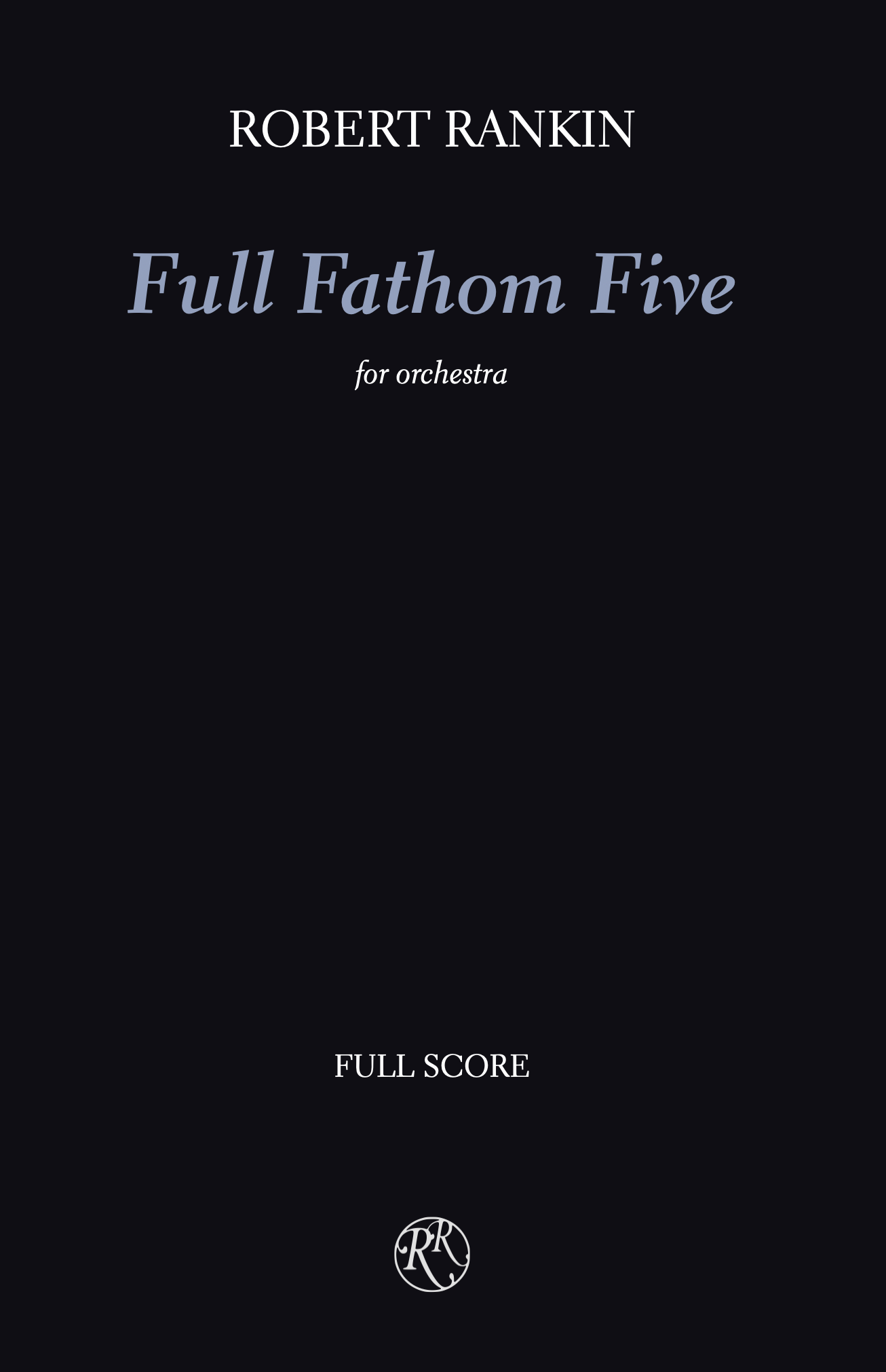Full Fathom Five
ensemble: (3[3=picc].3[3=Ehn].3[3=Bcl].3[3=cbn]-4331-timp.3perc.hp.pno[+cel]-strings)
duration: 9 minutes
written: summer 2018 - spring 2019
premiere: November 20th, 2019; Indiana University Concert Orchestra; Bloomington, IN
awards:
selected for a New Voices Orchestra performance through the Jacobs School of Music
finalist for a 2020 American Composers Orchestra Underwood New Music Reading
selected for the 2020 Illinois Philharmonic Classical Evolve Composer Competition
PROGRAM Note:
The title, Full Fathom Five, comes from a song sung by the siren-like spirit Ariel from Shakespeare’s The Tempest. In its context of the play, Ariel sings out a haunting poem which refers to a storm, a shipwreck, and the eventual drowning, in water about 30 feet (five fathoms) deep, of the father of the character to whom the lines are addressed. Though my work is, in essence, a tone poem depicting and reacting to this episode in The Tempest, the initial inspiration came from Jackson Pollock’s 1947 painting also entitled Full Fathom Five. Pollock’s dark and brooding painting, which includes nails, tacks, and cigarette butts, suggested a perhaps more violent and sinister take on Shakespeare’s take. Both of these sources proved vital in creating my own specific take on Ariel’s song.
Full Fathom Five opens with a rapid descent from the top range of the orchestra to the lowest. The music continues to spiral downward as an English Horn sings out “Ariel’s Song”, a menacing yet somewhat seductive, melismatic lyrical line. Low churning gestures in the cellos and basses begin to gain traction, eventually launching the piece into a much faster section, “Storms & Spells”. Here, bursts of Ariel’s sorcery, a flash of high woodwinds and bells, create violent and rapid changes in the orchestra. The music eventually works its way to the highest and loudest possible register before plunging back into the dark, murky world of the opening. The concluding section “Ariel’s Final Song” brings back the English Horn, this time playing a more melodic line which, as before, is swallowed up by a series of churning gestures in the orchestra. The piece concludes with one final rapid descent into the turbulent depths of the ocean.
Photo:
Jackson Pollock: Full Fathom Five (1947)

